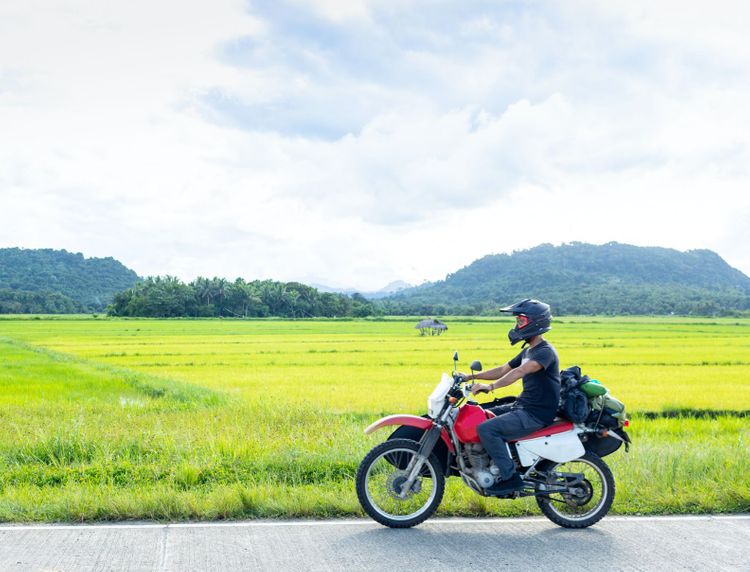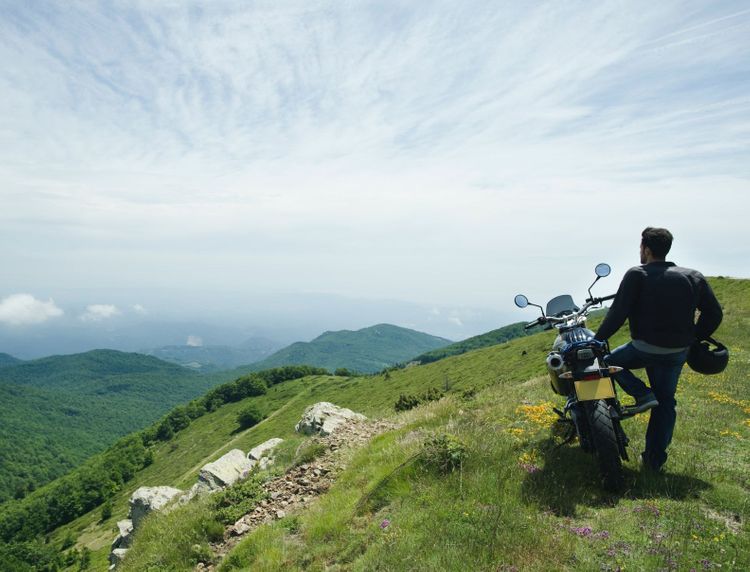Does Your Two Wheeler Safety Kit Include These?
Two-wheelers are the best choice to travel around the city. They can get you to your destination by speedily cutting through the maze of traffic. However, owing to the increasing number of road accidents, every two-wheeler rider needs to ensure that they have the holy trinity: a helmet, comprehensive insurance for 2-wheelers, and a bike safety kit. These three things play a crucial role in the event of an unfortunate road eventuality by providing essential assistance in testing times. And so, before you hop on your bike for another adventurous day, ensure your bike riding safety kit and your bike insurance policy is easily accessible. However, this starts with knowing the important inclusions in a bike safety gear kit.
Share this article
List of Content
- What All Should a Bike Safety Kit Include?
- Documents and Papers to Carry While Riding
- Additional Aspects of Safety
- In Conclusion
What All Should a Bike Safety Kit Include?
To help you kick start a safe journey, we have put together a checklist comprising safety essentials to assist every rider in ensuring a secure and pleasant journey:
- Spare Parts and Tools
As the storage space in a bike is less when compared to that of a car, you can only carry the essentials. Some pertinent essentials in a bike safety kit include a headlight bulb, battery fuses, clutch cable, multi-functional screwdriver, etc. When you carry these essentials, you will be able to handle some basic malware in your two-wheeler. And for more complicated ones, you can simply reach your insurance provider for roadside assistance by raising a claim against your bike insurance policy. The insurance for 2-wheelers by Tata AIG includes roadside assistance along with six other unique add-ons to strengthen your basic insurance coverage.
- First Aid Bike Kit
Regardless of whether you are travelling short or long distances, a first aid bike kit is crucial for every two-wheeler owner. With a first aid kit, individuals can treat minor injuries until they get to a medical facility. This can prevent any infections in the wound. Your medical kit for emergencies can be compact but it must include essentials such as:
Band-aids for minor cuts and scrapes
Medicines such as basic painkillers
Antibiotic ointments to prevent infections on wounds
Cotton and cotton bandages
Bike Safety Gear Kit
There is no adventure without first ensuring your safety. And for those who love long road trips on their bikes, appropriate safety gear in addition to a full-face cover helmet is essential for protection. Additionally, because of the potholes and clogged roads, Indian bike riders are more prone to accidents. And so, they need to have the right bike safety gear kit which keeps them relaxed with breathable liners. Essentials include thick pants, ankle-length boots, a jacket, and full-finger-covered gloves. If you are riding on a highway, you must also invest in sturdy knee guards. If you are a frequent long-distance rider, you must include an additional personal accident cover for owner-driver to your insurance for 2-wheelers.
While all these should be included in your bike safety kit, you should also carry some necessary documents with you.
Documents and Papers to Carry While Riding
Technically speaking, documents are not part of the bike safety kit. But that does not make it less important. There are certain documents that if you are caught riding without, you can be severely penalised and also be jailed.
These documents are :
- A valid driving licence
- A PUCC or Pollution Under Control Certificate
- A bike insurance policy
While most people are aware of the first two docs, they are a bit confused about the insurance. Here is why you must carry your
insurance for 2-wheeler:
Firstly, it is mandatory. Under the Motor Vehicles Act 1988, third-party bike insurance is a mandatory document for every vehicle owner. However, third-party insurance only covers damages to the third party. To get comprehensive protection, bike owners must invest in comprehensive insurance for 2-wheelers.
Secondly, and more importantly, a comprehensive bike insurance policy takes care of a host of scenarios right from theft and accidental damages to natural calamities. In case of any of these situations, a bike owner will incur heavy financial damages if they are not protected by bike insurance. And so every two-wheeler owner is advised to invest in a comprehensive bike policy at the earliest. Moreover, with the ease of the internet, one can easily buy and compare two-wheeler insurance online from the comfort of their home. Once you invest in the right insurance cover, ensure that you carry the insurance documents with you to keep you out of trouble.
Additional Aspects of Safety
In addition to carrying the bike riding safety kit, riders also need to inform themselves about how to take care of the contingency scenarios. It is normal to be shaken after being in an accident, but in times like these, speed is of the essence to keep injuries from escalating. Therefore, riders need to train themselves for emergencies. Here are some ways to ensure you will be able to look after yourself and those with you until help arrives:
- Acquaint Yourself with Basic Medical Care
Simply having a first aid kit is not enough if you don’t know how to use it in your time of need. Every guide to first aid will speak about the four-step plan that riders need to be aware of:
Step-1 Assess: Assess the situation and check whether you are safe from danger. Before helping the patient, you will also have to check if your intervention will be harmful and if the patient will need professional assistance.
Step-2 Intervention: Check the condition of the patient and then consider your expertise. You can call for medical help, and until the help arrives, you can help the patient with basic first aid
Step-3 Implementing First Aid: Based on your initial assessment, you can implement first aid such as treating cuts and scrapes, preparing the individual for transportation, etc.
Step-4 Evaluate: You will have to keep a watch on the condition of the patient until professional help arrives. For example, check if they are bleeding despite bandages and if yes, add more dressing without removing the previous bandage. If the person becomes unconscious, follow the actions to provide them with basic life support (BLS)
Keep Emergency Cash
Aside from the trip utility funds, ensure that you have cash stashed for emergencies, particularly if you are travelling to deserted locations. This is because you might not always have access to the ATM, and you may need funds in case any contingency situation arises.
- Learn the Basics of Bike Repairing
Every rider needs to know the basics of using the bike repair kit and identifying the problems with their vehicle. This helps them take care of their vehicle enough to at least get it to the nearest garage instead of being stranded in an unknown location. The internet makes it easy to quickly learn the basics.
- Keep Emergency Numbers Handy
In addition to the aforementioned safety tips, riders are also advised to keep emergency numbers handy, so they can reach out for help easily. This includes numbers of the insurance helpline, ambulance helpline, the police, as well, and close family.
In Conclusion
When on the roads, it is better to be safe than sorry. Carrying a bike safety kit, along with knowing the basics of safety essentials, can keep emergencies from escalating. In addition to this, two-wheeler riders also need to secure themselves and their financial health with a comprehensive bike insurance policy.
Share this article
Latest from our blogs

What Does It Take to Be a Good Biker?
You must have wondered what it takes to become a better ride...
Read More
5 Things You Did Not Know About Two Wheeler Insurance
In a time of heavy traffic and accidents, two wheeler insura...
Read More
5 Tips To Keep Your Two Wheeler Looking New
Make sure to wash it often. This keeps dirt and other unwant...
Read More